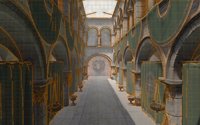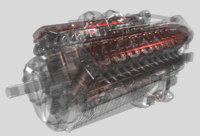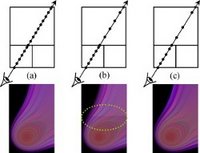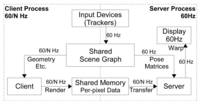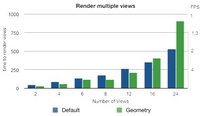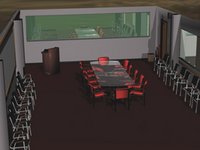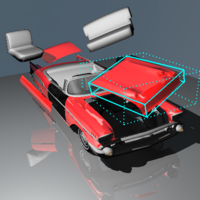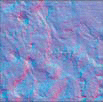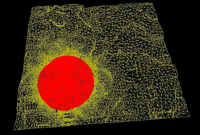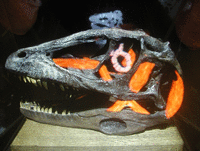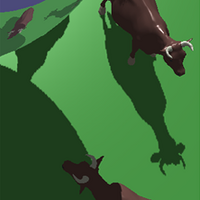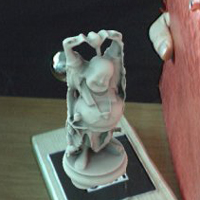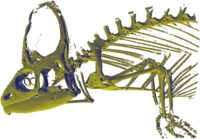
In this paper we propose a novel and efficient rasterization-based approach for direct rendering of isosurfaces. Our method exploits the capabilities of task and mesh shader pipelines to identify subvolumes containing potentially visible isosurface geometry, and to efficiently extract primitives which are consumed on the fly by the rasterizer.
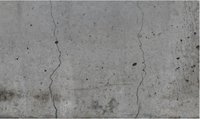
In previous work, the detection of cracks is based purely on their color offsets. We replace the original material colors by a geometry-based artificial coloring, which allows for crack detection even in the presence of severe radiometric disturbances that would otherwise introduce false positive matches.
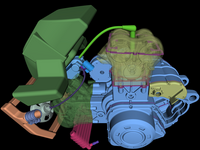
In Computer-Aided Design (CAD), Non-Uniform Rational B-Splines (NURBS) are a common model representation for export, simulation and visualization. In this paper, we present a direct rendering method for trimmed NURBS models based on their parametric description.
Modern virtual reality simulations require a constant high-frame rate from the rendering engine. They may also require very low latency and stereo images.
We propose several techniques for latency reduction in real-time rendering in the context of virtual reality applications.3D Image Warping and Multi-Frame Rate Rendering Techniques
In this paper, we present a flexible and efficient approach for the integration of order-independent transparency into a deferred shading pipeline.Order-Independent Transparency for Programmable Deferred Shading Pipelines
We present a highly efficient direct trimming technique for NURBS surfaces, which is applicable to tessellation-based rendering as well as to ray tracing systems.Direct Rendering of Trimmed NURBS Surfaces on the GPU
We introduce a greedy cut update algorithm based on split-and-collapse operations for updating the cut on a frame-to-frame basis.Error-Controlled Multi-Resolution Volume Rendering
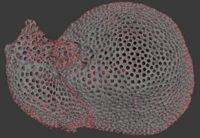
We describe the design, implementation and evaluation of a client-server depth-image warping architecture that updates and displays the scene graph at the refresh rate of the display.A Shared-Scene-Graph Image-Warping Architecture for VR: Low Latency versus Image Quality
We describe the design, implementation and evaluation of a client-server depth-image warping architecture that updates and displays the scene graph at the refresh rate of the display.A Shared-Scene-Graph Image-Warping Architecture for VR: Low Latency versus Image Quality
Using Projected Light to generate realistic Occlusion Effects for Optical See-Through Displays

